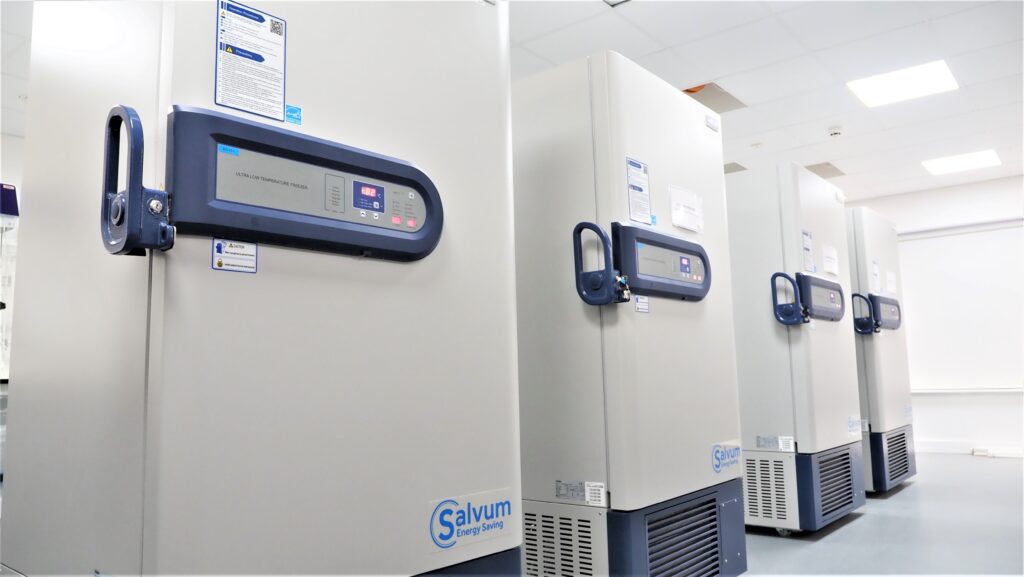BioGrad BioBanking makes use of cryopreservation to store your biospecimens in a viable manner.
In order to keep living cells alive in storage they are put through a process to halt any enzymatic or chemical activity which might cause damage to the biological material. Cells are frozen to very low temperatures (typically -196 °C) using liquid nitrogen along with a cryoprotectant chemical which prevents damage caused by the formation of ice crystals inside the cells. This process essentially halts all biological processes in the cell, preserving it in a state of suspended animation. In this cryopreserved state cells have been shown to be viable for many years.
Our scientific experts have perfected our method of cryopreservation and thawing, ensuring that you will get the maximum pay-out of viable cells upon release.
Our storage facilities are continuously electronically monitored with appropriate contingency and alarm escalation systems in place for the highly unlikely event of a system failure. A dedicated team of specialists are on hand 24/7 to maintain your valuable assets, and a robust safety and security system is in place to ensure the surveillance and integrity of your samples.
Our facility has the capacity for ultra-low freezer storage (-80 °C) with numerous specialised freezers that are carefully monitored and calibrated. Our -80 °C storage options similarly preserve biological specimens in a cryopreserved state that can prevent degrading in many types of molecules (including proteins, nucleic acids, endocrine molecules and more).
